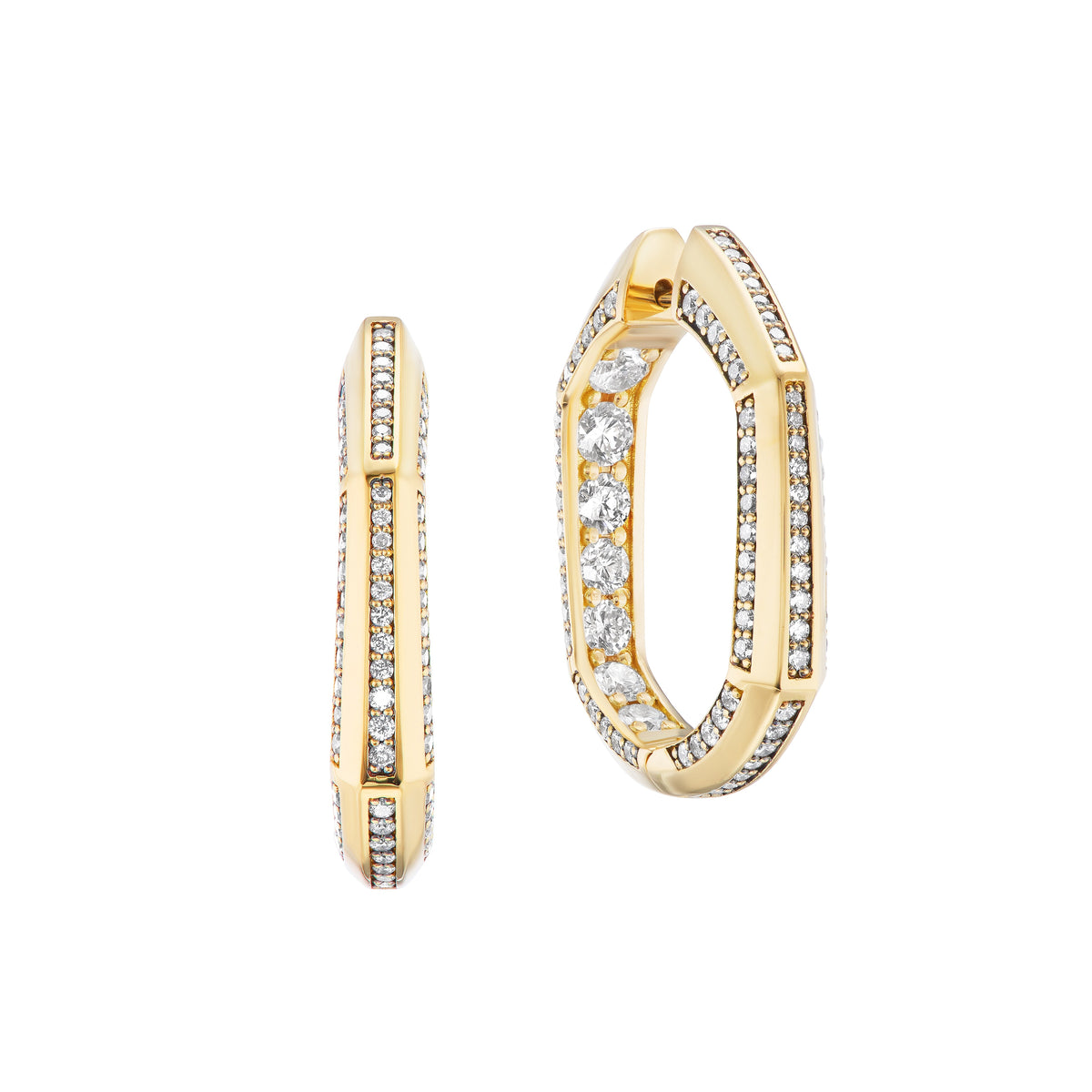
Diamond: Nature's Eternal Masterpiece
|
Time to read 4 min
|
Time to read 4 min
The word diamond comes from the ancient Greek "adamas," meaning unconquerable – a fitting name for the hardest natural substance on Earth. These extraordinary gems have captured the imagination for millennia, their pure brilliance and unmatched sparkle making them the ultimate symbol of enduring love and timeless beauty.
While many think of diamonds as colorless, these remarkable gems display nature's full spectrum. From the popular pure white to fancy colored stones in yellow, pink, blue, and extremely rare red, each tells a unique story of its creation. The most valued are colorless, displaying such perfect crystal clarity that light dances through them unimpeded, creating the famous fire and brilliance that sets them apart from all other gems.
The interplay of light within a diamond creates three magical effects: brilliance (the white light reflected from the surface and interior), fire (the scattered flashes of spectral colors), and scintillation (the pattern of light and dark areas that move as the diamond moves). Together, these properties create the mesmerizing sparkle that makes diamonds instantly recognizable. The color and cut emphasize these properties differently, ensuring each is unique.
Beyond their color and clarity, diamonds also vary in size and shape. From small accent stones to massive, awe-inspiring gems, the range of possibilities ensures there is one for every occasion and taste. Additionally, advancements in gemological science have enabled the production of lab-grown diamonds, which offer an environmentally friendly and ethically sourced alternative while maintaining the same physical and chemical properties as their natural counterparts.
Diamonds form deep within the Earth under extreme pressure and temperature, typically at depths between 150 to 250 kilometers. Ancient volcanic pipes brought these treasures to the surface, creating the deposits we know today. Significant sources include:
Africa's historic mines in South Africa and Botswana
The frozen reaches of Canada's Northwest Territories
The rich deposits of Western Australia
The traditional mining regions of Russia
Although all share the same fundamental properties, each location's subtle characteristics influence the production, giving stones a unique address or fingerprint. The journey from deep within the Earth to a sparkling gem on a ring is a testament to the marvels of nature and human craftsmanship.
Modern mining techniques and sustainable practices are increasingly shaping the diamond industry. Companies strive to minimize environmental impact while supporting the communities where mining occurs, ensuring that these treasures contribute positively to the world.
Throughout history, diamonds have adorned crowns, scepters, and jewels of state. The Great Star of Africa (Cullinan I), weighing 530.4 carats and set in the British Royal Scepter, remains one of the largest cut diamonds in the world. The Hope Diamond, with its remarkable blue color and fascinating history, continues to captivate visitors at the Smithsonian Institution.
The tradition of diamond engagement rings gained prominence in the 15th century when Archduke Maximilian of Austria gave Mary of Burgundy a ring featuring the gemstone. This set a trend among European nobility that eventually spread worldwide.
Diamonds also hold a place in technological and industrial history. Their unmatched hardness makes them invaluable in cutting, grinding, and polishing tools. These dual roles as symbols of beauty and utility underline the their versatility and importance.
Across cultures, diamonds symbolize purity, strength, and eternal love. Ancient Greeks believed they were tears of the gods. In India, they were associated with divine power and protection. Today, they remain the ultimate symbol of commitment and enduring love, chosen by couples worldwide to mark their engagements and celebrations.
As April's birthstone, they represent clarity and strength for those born in this month. Beyond personal adornment, diamonds serve as family heirlooms, passing stories and traditions from one generation to the next. Their enduring nature ensures that they remain timeless symbols of cherished memories.
Diamonds have also inspired countless legends and folklore. Stories of supposed curses, like the Hope Diamond, and tales of extraordinary gems, such as the Koh-i-Noor, contribute to their allure and mystique.
Diamond's perfect hardness (10 on the Mohs scale) allows for precise cutting and everyday wear in any setting style. Popular cuts include:
Round Brilliant: The classic cut that maximizes sparkle
Princess: Modern square cut combining tradition with contemporary style
Oval: Elegant elongated shape that flatters the hand
Emerald: Sophisticated step-cut highlighting clarity
Cushion: Romantic cut combining vintage appeal with modern brilliance
Settings range from classic solitaires that let the gem's natural beauty shine to elaborate designs incorporating multiple stones. Platinum and white gold remain popular choices for settings, though yellow and rose gold offer beautiful contrast for both white and colored stones.
Advances in diamond-cutting technology have enabled even more intricate and unique designs, ensuring that each piece of diamond jewelry can be as unique as the individual who wears it.
Today, diamonds continue to represent the pinnacle of gemstone beauty and durability. Their unique optical properties, unmatched hardness, and rich symbolic meaning make them perfect for both significant occasions and everyday wear. Whether gracing an engagement ring, marking a special milestone, or adding sparkle to a favorite piece of jewelry, diamonds remain nature's most remarkable gem.
The enduring appeal of diamonds lies in their perfect combination of physical properties and emotional significance. Each diamond, with its unique pattern of internal characteristics, tells its own story while participating in the greater human tradition of celebrating life's most precious moments with nature's most precious gems.
